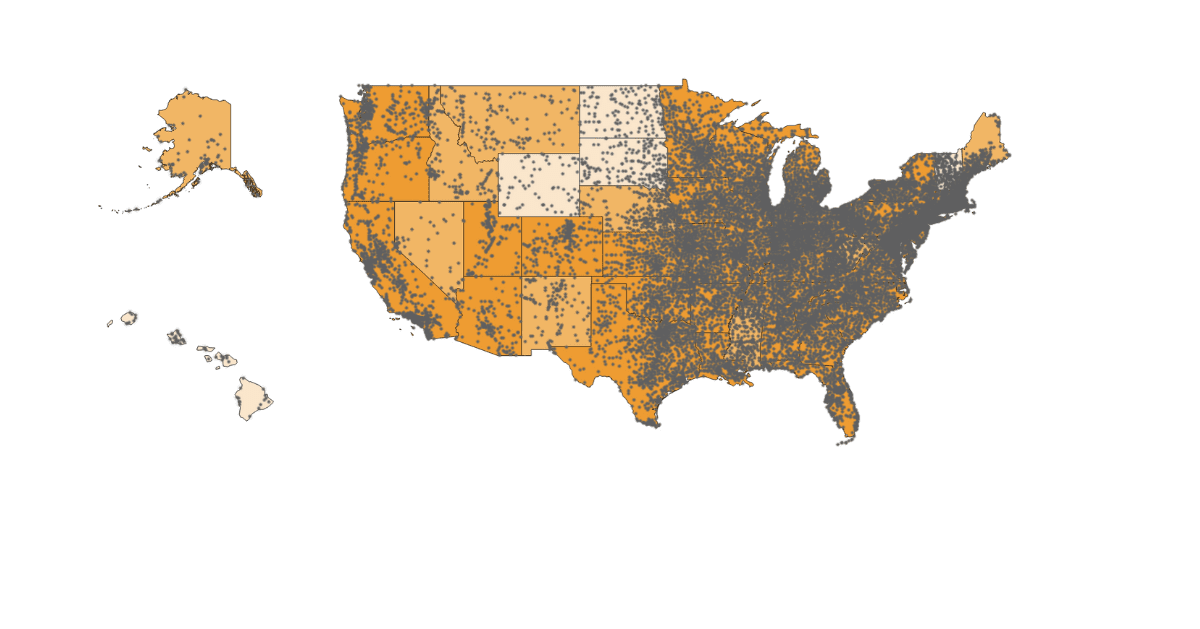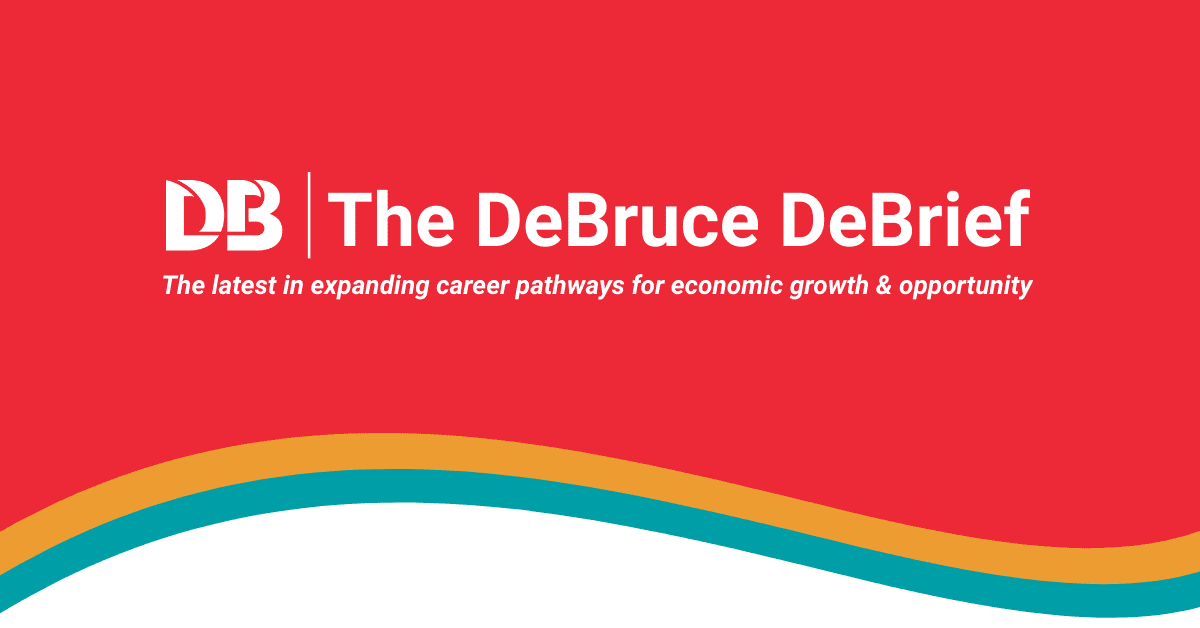Link copied to clipboard
During National Career Development Month in November, The DeBruce Foundation welcomed educators, experts, and community partners to its annual Employment Empowerment Event. This year, the event focused on K–12 education and the role teachers play in shaping students’ career paths.
Attendees joined virtually from all over the country, spanning professions in education, nonprofit organizations, workforce development, for-profit sectors, and government.
With expert insights, new research, and inspiring stories from classrooms. The event highlighted The Foundation’s free tools and resources. These empower teachers to help students understand their strengths and imagine what’s possible.
A Conversation with Dr. Brad Johnson
The event opened with a fireside chat with Dr. Brad Johnson, global education and leadership expert. Dr. Johnson emphasized the realities of today’s rapidly changing world of work, noting that young people entering the workforce today will likely experience multiple careers throughout their lifetime.
Key Messages from Dr. Johnson:
- Adaptability is essential and teachable. Students need the ability to move in new directions, which aligns directly with The Foundation’s Agilities© framework.
- Understanding your strengths builds confidence. When students can name their strengths and talents, they feel empowered in school and beyond.
- Reframing behavior helps students see their potential. For example, a student who is called “Bossy” by others can be reframed as that student having leadership as a core strength.
- Relational intelligence is important. Everyday interactions, from recess to group work, teach students how to collaborate, solve conflicts, and engage successfully in groups.
- It’s never too early to start career preparation. The habits students build in elementary school help shape their future pathways.
“If no one has told you lately, thank you. Thank you for all that you do, and remember the impact that you’re making. You’re not just a teacher in the classroom, but you’re an adult that’s impacting the lives of students,” said Dr. Brad Johnson.
Research Insights from The DeBruce Foundation
The Foundation also shared new findings from its ongoing research on what drives Employment Empowerment. Employment Empowerment leads to careers with better benefits, higher wages, lower unemployment, greater autonomy, and increased stability.
Since 2020, The DeBruce Foundation has surveyed more than 48,000 working-aged Americans, uncovering two critical pillars that consistently lead to stronger career outcomes.
1. Career Literacy
Understanding one’s strengths, interests, and options, and having the confidence to explore a wide range of career opportunities.
2. Network Strength
Having deep and diverse connections with people from different backgrounds, industries, and experiences.
Those with high Career Literacy and Network Strength are:
- 26% more likely to consider jobs outside their current path
- 34% more likely to be currently employed
- Earning an average of $44,000 more per year than those who are low in Career Literacy and Network Strength
While 40% of working Americans are considered Employment Empowered, The Foundation highlighted that educators are the key to helping the remaining 60% build by building Career Literacy and Network Strength early. Those who start early are more likely to be Employment Empowered than those who start later in life.
Youth Attitudes Toward Careers Research
While 8 in 10 young people feel some confidence toward their career, half say they have little to no idea how to build one.
The Foundation highlighted several free, research-backed tools available to assist people in building empowered careers:
The Agilities Framework
The 10 Agilities are skills used in every job in the economy. By learning about the Agilities, students are better equipped to develop their skills, gain confidence, and explore future career options. The Agilities give students the vocabulary to talk about what they’re good at doing and apply those strengths to real careers.
What Students Say About the Agilities
A highlight of the event was hearing directly from students who have used Agilities in their classrooms. Watch the video to hear more from the students and hear how the Agilities have made an impact. Some powerful quotes from students are:
- “Agilities are very helpful when you’re in school because you find out what you’re good at, so you can solve problems when you work on a group project, and you can contribute much more to your team.” – Caroline, 8th grade
- “I think it’s important to have different people with different Agilities so each person brings something different to the table.” – Kenton, 5th grade
- “I got to use some of the key words that are in the description of them on my resume, so it made my resume build a lot better, and I got a lot of compliments on that, actually, from the people that interviewed me.” – Layni, 12th grade
Agilities in Action
Cindy Schluckebier, Integration & Training Manager at The DeBruce Foundation, and one of the earliest teachers to integrate the Agilities into her classroom, introduced how the Agilities framework is key to building Career Literacy and confidence in the classroom.
Why Cindy says teachers love using the Agilities framework:
- Easy to implement
- Targeted, ready-to-use resources
- Boosts student confidence
Across the country, school districts are bringing the Agilities to life in their classrooms. Districts like Piper, Blue Springs, and Joplin are finding creative and exciting ways to weave the Agilities into their curriculum, inspiring both educators and students alike.
Piper School District
Piper School District has found engaging ways to incorporate the Agilities into their elementary classrooms:
- Morning meetings featuring an Agility of the Week
- Read-alongs and activities
- Agilities videos and assemblies
- Digital desk tags with students’ top Agilities in Canva
- Incorporating the Agilities into assignments
- Posters, magnets, and handouts readily available
In the elementary grade levels, students learn the names of each Agility and gain awareness of the skills they use in the classroom, at home, and in their community, thus building confidence in their abilities.
Blue Springs School District
Educators in a Blue Springs middle school showcased how the Agilities fit seamlessly into their mission of real-world learning.
- Teachers adapted Agilities to be relevant to their grade and content
- Community partners, including professionals like dentists, joined to help students connect skills to real careers
- Students developed skills they will use in high school and beyond
In the middle school grade levels, knowing the Agilities helps students better understand the world of career opportunities ahead of them.
Joplin High School
Joplin High School shared its Freshman Academy course, where:
- Every 9th grader takes the Agile Work Profiler and learns their top Agilities
- Lesson plans help students identify career paths that fit their strengths
- Career Explorer Tools support students in researching schools and career fields
- Agilities help students build a growth mindset and develop an identity as capable learners and decision-makers
In high school, understanding the Agilities allows students to make thoughtful and informed decisions about their next steps.
Take the Next Steps
The DeBruce Foundation’s event, Employment Empowerment for K-12: From Classroom to Career, showcased the powerful impact educators can have in preparing students for meaningful careers. From research insights to real-world classroom examples, attendees left inspired by the tools and strategies available to help students build confidence and explore their potential. We invite you to watch the full event to see the Agilities in action, and explore the K-12 Resources for your classroom.

